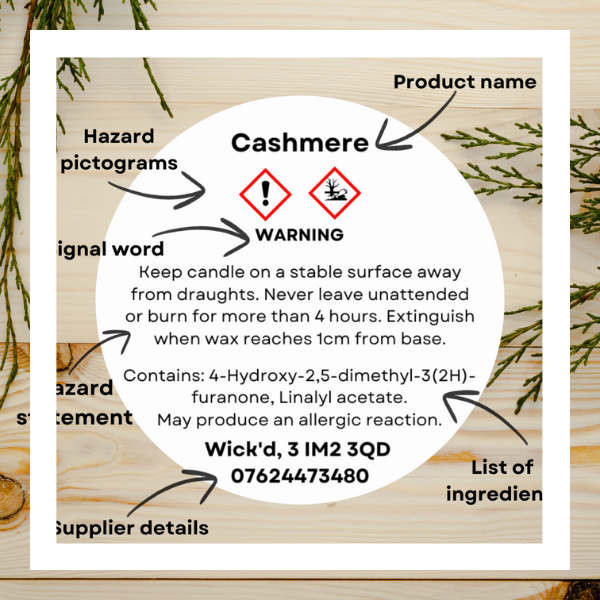
Candlemakers must ensure their products display hazard labels. Referred to as CLP labels, every purchased candle must have this label on the jar's bottom indicating contents and safety warnings for its fragrance, whether Essential Oils or Fragrance Oils
These CLP labels (Classification, Labelling, and Packaging) refer to regulations enacted in the European Union in 2009 (including the UK) to maintain consistent standards for substances and mixtures.
CLP regulations apply to home fragrancing products, not cosmetics. This includes reed diffusers, wax melts, scented sachets, room sprays, and candles, among others.
Certain fragrance ingredients may irritate the eyes or skin, cause skin sensitisation, or pose environmental risks. If concentrations exceed specified levels, a warning and pictograms must be included on the product's labeling and packaging to alert consumers of potential health or environmental dangers.
Small Packaging Exemptions
Exceptions exist in CLP regulations for substances and mixtures in small containers (typically under 125ml) or challenging to label containers.
These exceptions allow the supplier to leave out certain hazard and precautionary statements or pictograms that are typically required under CLP regulations on the product label.
The information is based on our current understanding of the new CLP legislation.
What is IFRA?
The International Fragrance Association (IFRA) is a global organisation that represents the fragrance industry. It focuses on safeguarding industry interests and advocating for safe fragrance usage.
What are the IFRA standards?
The fragrance industry has established IFRA Standards to ensure safe fragrance use. These guidelines involve industry experts in a transparent process overseen by independent experts for integrity..
IFRA updates standards based on latest scientific evidence, assessing wide range of fragrance ingredients. They set the maximum dosage for natural and synthetic materials in final products which is done to ensure the safety of consumers and to align with the latest scientific knowledge and understanding.
Difference between IFRA & CLP
IFRA Standards and the CLP Regulation are separate. IFRA produce IFRA Standards which ban, restrict, or set criteria for the use of certain fragrance ingredients, to ensure the safe use of fragrance for consumers. Adhering to IFRA standards is mandatory for IFRA members only.
The CLP Regulation ensure that fragranced products (excluding cosmetics) are classified, labelled, and packaged in a consistent way so that the hazards of the products are clearly conveyed to consumers.

